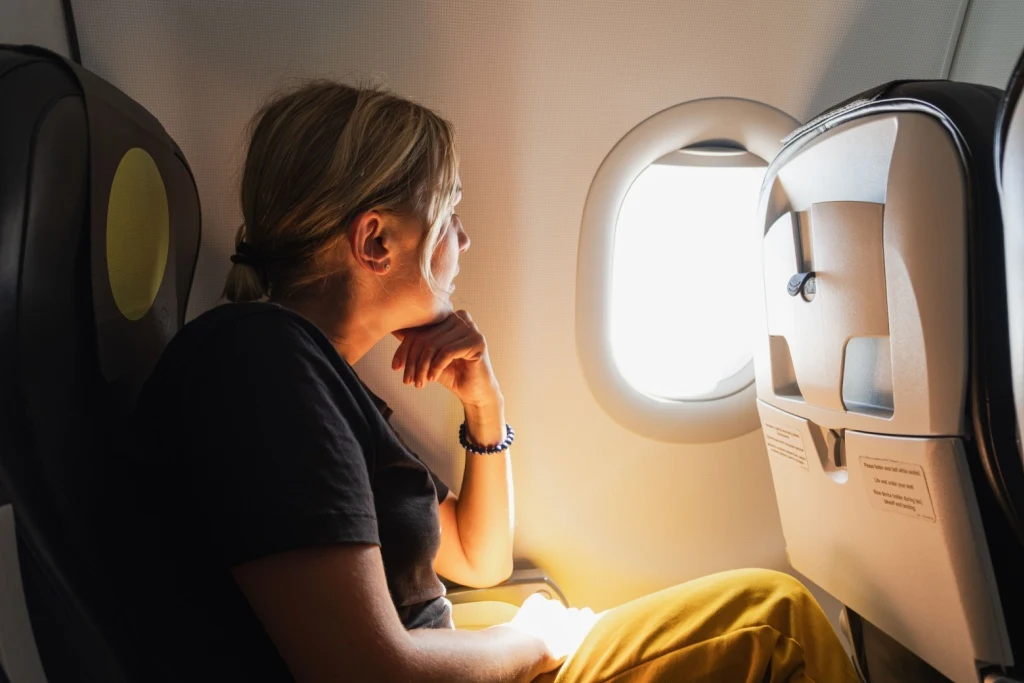Get Over Jet Lag Fast With These 15 Tips
Feel your best and get the most out of your trip by minimising the jet lag. Here’s how.

June 19, 2024 - Updated June 19, 2024

There’s nothing like the drowsy, out of sorts feeling that jet lag brings to completely derail the plans you had for your holiday or work trip. Luckily, there are a few things you can do before, during and after your flight to shake off any jet lag as quickly as possible and synchronise your body’s rhythms with your new time zone.
What is jet lag?
Most of us know what jet lag is from personal experience travelling between different time zones, but what is actually going on within your body besides catching up on lost sleep and adjusting to a different schedule that leaves you feeling so out of whack?
According to the Mayo Clinic and Cleveland Clinic, jet lag is a temporary sleep problem that occurs when your body’s internal clock or circadian rhythm is still synced up with your original time zone after travelling.
Your circadian rhythm is the 24-hour body cycle that runs in the background to carry out and support essential processes like your sleep-wake cycle, digestion, metabolism, mood, immune function, hormone levels and body temperature. It tells your body when to stay awake and when it’s time for sleep, and when you cross multiple time zones, unfortunately your circadian rhythm doesn’t automatically switch to the new schedule when you disembark the plane (if only it was that easy!).
Jet lag symptoms
Aside from issues with your sleep and energy such as daytime drowsiness and fatigue, waking up too early or having trouble falling asleep at night, jet lag can also show up in a myriad of ways that are all connected to those essential processes carried out by your circadian rhythm. You might experience a general feeling of being unwell or not yourself, have stomach problems, changes in mood or a lack of focus.
How long does jet lag last?
While some people experience jet lag immediately after travelling, it’s also common to have a good night’s sleep straight after your flight, think you’ve dodged the jet lag bullet, and then be hit by symptoms of jet lag in the days (or even weeks!) following. And the further you travel and the more time zones you cross, generally the worse your jet lag will be. Depending on how far you have travelled, your overall health and your body’s unique rhythms, it can take a couple of days or a week to feel back to normal again.

How to beat jet lag
Here are 15 simple things you can do at different stages of your travel journey to synchronise your circadian rhythm with your new time zone quickly and reduce jet lag as much as possible.
Before you travel
1. Get plenty of sleep
The idea that travelling tired will reduce jet lag by helping ensure you fall asleep quickly on the plane is a myth and being sleep-deprived before a flight can actually increase your chances of experiencing jet lag. Travelling when you’re well-rested is the best way to set yourself up for success!
2. Move your schedule slightly
If the demands of your work and family allow you the freedom to do so, it can be worth gradually adjusting your sleep scheduling to align with the timezone of your destination. This could mean going to bed and waking up earlier or later than usual to make the transition easier.
3. Drink plenty of water
Boarding your flight well-hydrated can help to counteract the dehydrating effects of the dry cabin air and reduce your chances of arriving dehydrated which can make jet lag worse.
4. Prep for comfort
Pack whatever you need in your carry-on to feel comfortable enough to sleep, such as ear plugs, an eye mask, neck pillow, comfortable clothes or noise-cancelling headphones.
5. Consider melatonin.
Melatonin is a hormone naturally produced by your body in the hours before your bedtime to promote sleep and can be purchased as an over-the-counter sleep aid. Always consult your healthcare provider about the correct dose and optimal timing in relation to your flight time and the time zone of your destination.
During your flight
6. Stay hydrated and avoid caffeine and alcohol
While a drink may give you a feeling of relaxation, ultimately it’s going to set you back by reducing the quality of your sleep and dehydrating your body, as will caffeine. Stick to water on long flights and drink up to keep yourself hydrated.
7. Be smart about sleep
If your flight is during the sleeping hours of your destination, try to get some shut-eye to start switching your body to your new time zone. If you’re flying during the waking hours of your destination, try to stay awake as much as possible to adjust faster!
8. Move around
On long-haul flights, take occasional walks around the cabin or do some smaller movements and stretches in your seat.

When you arrive
9. Use light to your advantage
If you remember anything about how to beat jet lag - make it how important light is. Light has an incredibly powerful influence on your circadian rhythm and the regulation of melatonin, so exposing yourself to daylight (or artificial light during waking hours if you can’t get outside) can work wonders to jump-start your body and reset your internal body clock. The Mayo Clinic and Cleveland Clinic both recommend exposing yourself to light in the evening after travelling west and in the morning after travelling east.
10. Choose familiar foods
If jet lag has upset your stomach or digestion, stick to lighter meals or foods you’re used to eating for a couple of days until your body adjusts.
11. Match the meal times
Because your circadian rhythm is connected to your metabolism, eating at the mealtimes of your new destination can make a difference.
12. Be sleep-savvy
If you can, try not to sleep until nighttime! Avoiding naps can be downright impossible if you’re dealing with a severe case of jet lag, so if you need to get some quick kip, the Sleep Foundation says to nap for no longer than 30 minutes and nap eight or more hours before you go to bed.
13. Exercise
Moving your body, especially if it’s outside in daylight, can help to shake jet lag, energise you and align your body with your new schedule. There are plenty of equipment-free workouts in the Sweat app that you can do from anywhere, but exercise doesn’t have to mean a structured workout if that’s not your idea of a holiday - there are plenty of ways to stay active on vacation.
14. Prioritise relaxation
Whether you’re travelling for work or play, allocating some time in your schedule to relax, wind down or meditate can help to promote better quality sleep by reducing your stress levels.
15. Continue to hydrate
Many of us don’t drink nearly as much water as we should during a long-haul flight, so carry a bottle with you when you arrive and take regular sips to top yourself up again.
Flying to a new country and suffering from jet lag isn’t a good time for anyone. Put these tips into practice next time you’re travelling across time zones and set yourself up for your most energised trip yet!

Erin is a writer and editor at Sweat with years of experience in women's publishing, the fitness industry, media and tech. She's passionate about the power of movement, and you can often find her on a yoga mat, a hike, a dance floor, in the ocean or the gym.
* Disclaimer: This blog post is not intended to replace the advice of a medical professional. The above information should not be used to diagnose, treat, or prevent any disease or medical condition. Please consult your doctor before making any changes to your diet, sleep methods, daily activity, or fitness routine. Sweat assumes no responsibility for any personal injury or damage sustained by any recommendations, opinions, or advice given in this article.
Wellbeing